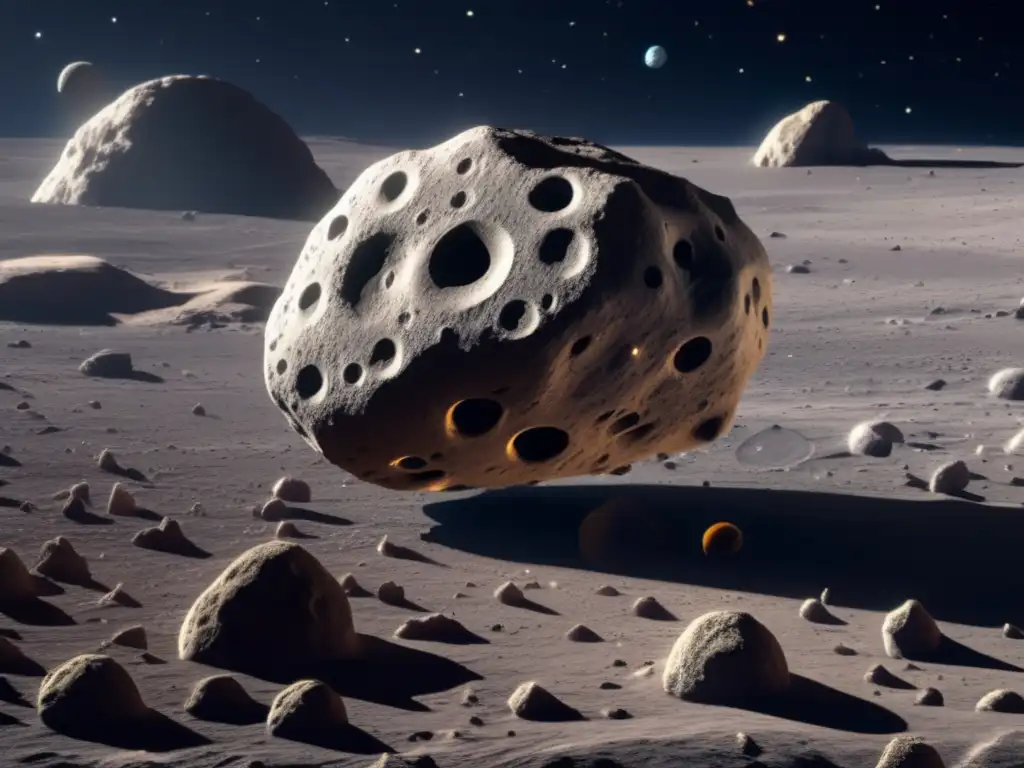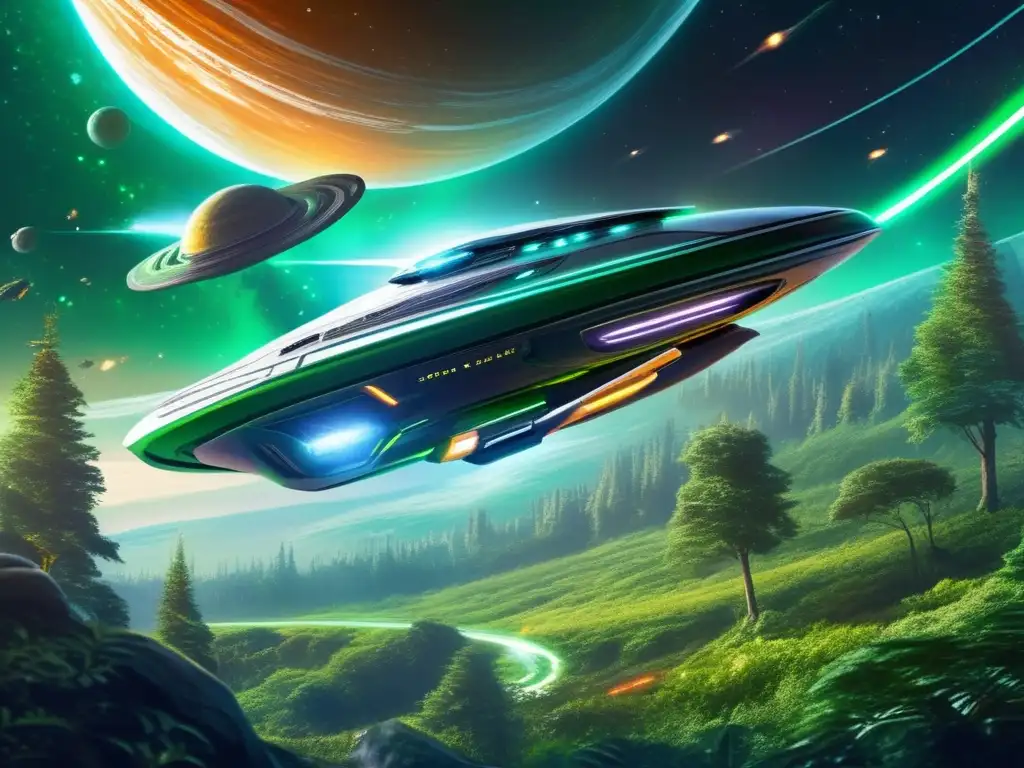Life's Intergalactic Ride: Asteroids And The Transport Of Microbes

Introduction
The universe is vast and infinite, and it is home to billions of celestial objects. Asteroids, which are small rocky objects that orbit the sun, have always fascinated scientists and researchers around the world. These small space rocks have played a significant role in shaping the solar system, and they continue to intrigue experts with their potential for extraterrestrial life. In this article, we will explore the connection between asteroids and microbes and how asteroids can serve as vehicles for the transport of life across the galaxy.
The Role of Asteroids in the Origins of Life

The Building Blocks of Life
The building blocks of life are amino acids, which are organic compounds composed of carbon, hydrogen, oxygen, nitrogen, and sulfur. These molecules are the basic units that make up proteins, one of the essential components of life on Earth. Scientists believe that asteroids played a crucial role in delivering these amino acids to our planet during its early stages. Evidence suggests that amino acids found on Earth have extraterrestrial origins and could have been delivered by asteroids.
Panspermia: The Seed of Life
Panspermia is the scientific theory that life on Earth originated from space. According to this theory, life forms, including microbes, were transported from other planets or asteroids to Earth. The theory is based on the idea that life is not unique to Earth and can exist in other parts of the universe. Scientists postulate that asteroids could have carried microbes through space and deposited them on Earth, providing the foundation for all life on the planet.
Extremophile Microbes on Asteroids
Extremophiles are microorganisms that can survive in extreme environmental conditions, such as high temperatures, acid environments, and high levels of radiation. Scientists have discovered the presence of extremophile microbes on asteroids, particularly on carbonaceous chondrite asteroids. These findings suggest that life can exist beyond our planet and that asteroids can transport microbes across the galaxy.
The Transport of Microbes through Space

Asteroids as Spacecraft
Asteroids can be considered miniature spacecraft because they can travel through space while carrying organisms and other materials. Their small size and low density make them ideal for transporting microbes for long distances and across different planets. As asteroids collide with other objects in space, they can eject rocks and debris containing microbes, which can then travel great distances before landing on a celestial body.
The Role of Impact Craters
Impact craters are formed when an asteroid collides with a planet or moon. These craters can serve as protective environments for microbes, shielding them from harmful cosmic radiation and extreme temperatures. The impact can also create shockwaves that could alter the chemical composition of the asteroid's surface, potentially creating new organic molecules that could lead to the formation of life.
Microbial Survival in Space
One of the biggest challenges for microbial survival during interplanetary travel is exposure to the harsh space conditions, including extreme temperatures, cosmic radiation, and vacuum. However, studies have shown that some microbes can survive these conditions for extended periods. For example, researchers have discovered that Deinococcus radiodurans, an extremophile bacteria, can survive in outer space for up to three years, making it a likely candidate for space travel.
The Search for Extraterrestrial Life on Asteroids

Exploring Near-Earth Asteroids
NASA's OSIRIS-REx mission is a sample-return mission that aims to explore the asteroid Bennu, which is only a few hundred meters in diameter and orbits close to Earth. The mission will collect a sample of the asteroid's surface material, which will then be returned to Earth for analysis. The mission hopes to shed light on the formation of the solar system and the potential for extraterrestrial life on asteroids.
The Origins, Spectral Interpretation, Resource Identification, Security, Regolith Explorer (OSIRIS-REx 2) Mission
The OSIRIS-REx 2 mission, scheduled for launch in 2027, aims to explore another asteroid, Apophis, which is expected to pass by Earth several times over the next decade. The mission will focus on the asteroid's potential as a resource for future space exploration and its potential for hosting microbial life.
Colonizing Asteroids
In the future, colonizing asteroids could be essential for expanding human presence in space. Researchers are exploring ways to mine asteroids for resources, including water, minerals, and organic compounds. These resources could be used to sustain astronauts on long-duration space missions and even support the establishment of permanent human settlements on asteroids.
Frequently Asked Questions

-
Can asteroids carry living organisms through space?
Yes, asteroids can transport living organisms through space, and scientific evidence supports the idea that microbial life forms may have been transported to Earth via asteroids.
-
What conditions can microbes survive during interplanetary travel?
Microbes can survive extreme temperatures, cosmic radiation, and vacuum during interplanetary travel, but certain types of microorganisms, such as extremophiles, are better suited to survival in space.
-
What missions are focused on exploring asteroids for the potential of extraterrestrial life?
NASA's OSIRIS-REx and OSIRIS-REx 2 missions are focused on exploring near-Earth asteroids Bennu and Apophis, respectively, for the potential of extraterrestrial life.
-
Can asteroids be mined for resources to sustain human life in space?
Yes, researchers are exploring ways to mine asteroids for resources that can be used to sustain human life in space, including water, minerals, and organic compounds.
-
Could colonizing asteroids support the establishment of permanent human settlements?
Yes, colonizing asteroids could support the establishment of permanent human settlements and the expansion of human presence in space.
Conclusion
Asteroids have captivated scientists with their potential for extraterrestrial life and their ability to transport microbes across the galaxy. Evidence suggests that asteroids played a significant role in the origins of life on Earth, delivering essential building blocks and possibly even living organisms to our planet. As we continue to explore space, asteroids will be crucial in our search for extraterrestrial life and as a source of resources for sustaining human life in space. Let us continue to push the boundaries of science and explore the mysteries of the universe.
Additional Resources

To learn more about asteroids and their potential for extraterrestrial life, visit the following websites:
- NASA Asteroid Exploration Program
- Space.com Asteroid News and Information
- Science News Asteroids and Comets Coverage
 Asteroids: The Unlikely Heroes Of Life's Cosmic Journey
Asteroids: The Unlikely Heroes Of Life's Cosmic Journey Bringing Life To Other Planets: The Potential Role Of Asteroids
Bringing Life To Other Planets: The Potential Role Of Asteroids Asteroids: The Unexpected Lifeboats In The Universe
Asteroids: The Unexpected Lifeboats In The UniverseIf you want to discover more articles similar to Life's Intergalactic Ride: Asteroids And The Transport Of Microbes, you can visit the Asteroids and Extraterrestrial Life category.
Leave a Reply

Articulos relacionados: